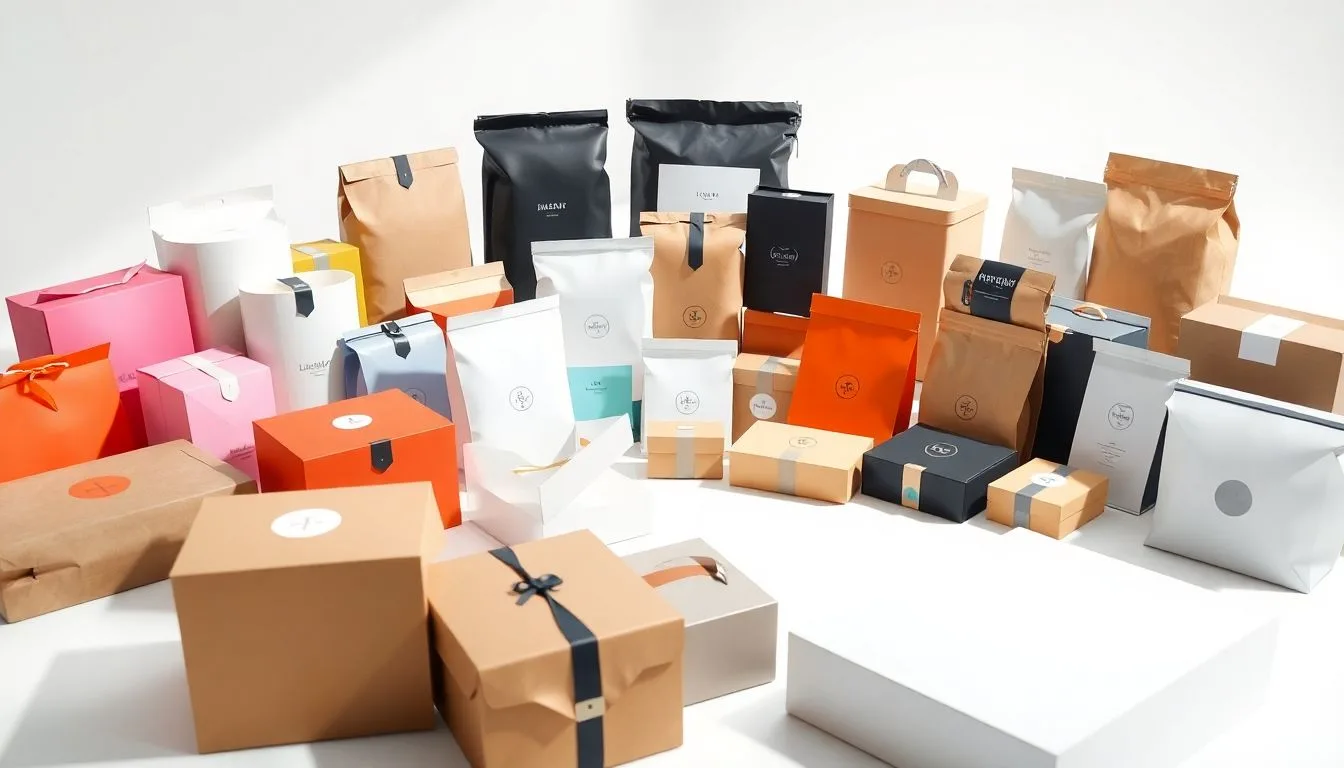More than 70% of consumers admit that product packaging influences their buying decisions. In today’s crowded marketplace, where choices abound, effective product packaging can set a brand apart. It’s not just about keeping items safe; product packaging serves as a potent marketing tool that shapes brand perception and boosts sales.
The Psychology of Packaging Design
Color Psychology and Brand Identity
Colors are powerful. They can evoke emotions and create connections. For example, think of McDonald’s red and yellow logo. This combination stimulates appetite and happiness. Brands can align their packaging colors with their identity to create recognition and trust.
- Green often suggests eco-friendliness.
- Blue conveys trust and reliability.
- Black imparts luxury and sophistication.
Brands like Coca-Cola and Starbucks expertly use color to connect with their consumers and enhance brand loyalty.
Typography and Font Selection
Fonts are more than just letters; they communicate a lot about a brand. The right typography can enhance readability and establish a brand’s personality. For instance, a fun, playful font might suit a candy brand, while a sleek, modern typeface might fit a tech company. Think about how Apple uses clean, modern typography to symbolize innovation.
Visual Hierarchy and Information Architecture
Guiding the consumer’s eye using visual hierarchy is essential. Key elements like logos, product names, and benefits should stand out. This helps potential buyers quickly grasp what the product offers. Proper spacing, size differences, and contrasting colors help create a structured flow of information.
Sustainable Packaging: An Eco-Conscious Approach
The Growing Demand for Eco-Friendly Packaging
In recent years, consumers have shifted toward eco-friendly products. Almost 60% of shoppers are willing to pay more for sustainable packaging. This trend indicates a strong link between packaging choices and brand loyalty.
Materials and Production Methods
Today, several materials meet eco-friendly standards. Recycled paper, glass, and biodegradable plastics are popular options. Brands like Unilever and Coca-Cola have embraced sustainable packaging, showcasing their commitment to the environment while appealing to eco-conscious consumers.
Communicating Sustainability
Brands must effectively communicate their sustainable practices. Using clear messaging on packaging can inform consumers about the eco-friendly materials and methods used. Simple labels and graphics can illustrate the sustainable nature of the product, enhancing brand perception.
Leveraging Packaging for Brand Storytelling
Packaging as a Brand Narrative
Packaging can tell a story. It’s a canvas to express brand values and mission. For example, Toms Shoes uses its packaging to highlight its “One for One” philosophy, where they donate a pair of shoes for every pair sold.
The Power of Minimalist Packaging
Less can be more. Minimalist designs often signal sophistication and quality. Brands like Apple and Muji excel with simple packaging that emphasizes their products, allowing the items to speak for themselves.
Using Packaging to Create an Unboxing Experience
An exciting unboxing experience can leave a lasting impression. Brands like Glossier and Harry’s create memorable moments with thoughtful packaging designs. Special touches, like personalized notes or high-quality materials, enhance customer satisfaction and brand loyalty.
The Role of Packaging in E-commerce
Optimizing Packaging for Shipping and Delivery
Protective packaging is a must for e-commerce. Over 50% of online shoppers expect their items to arrive undamaged. Using sturdy, well-designed packaging reduces the likelihood of returns and refunds, building customer trust.
Packaging for Brand Recognition Online
Online shoppers often make decisions based on images. Unique, eye-catching packaging can enhance brand recognition on platforms like Amazon and eBay. Brands can stand out in crowded marketplaces through distinctive designs that resonate with their audience.
The Importance of Packaging Inserts and Branding
Strategically placed inserts can reinforce brand messaging. Companies like FabFitFun include personalized thank-you notes or discount coupons in their packages, creating a connection with customers and enhancing their experience.
Measuring the ROI of Packaging Design
Tracking Key Metrics
Monitoring key metrics is essential. Brands should track sales increases, changes in customer feedback, and brand awareness to measure the effectiveness of packaging design. These insights help optimize future strategies.
A/B Testing Different Packaging Designs
A/B testing compares different designs to discover what works best. This method helps in refining color choices, typography, or overall design to meet consumer preferences effectively.
Analyzing Customer Feedback and Reviews
Collecting customer feedback is invaluable. Many companies listen to consumer input to improve their packaging. Brands like Amazon regularly adjust their packaging based on customer reviews, ensuring they meet evolving expectations.
Conclusion:
Effective packaging is crucial in the modern market. It plays a vital role in shaping brand perception, influencing purchasing decisions, and ensuring customer loyalty. By optimizing product packaging strategies, brands can harness its potential as a marketing tool. Now is the time to rethink your packaging approach and create a lasting impact on consumers.


Leave a Reply